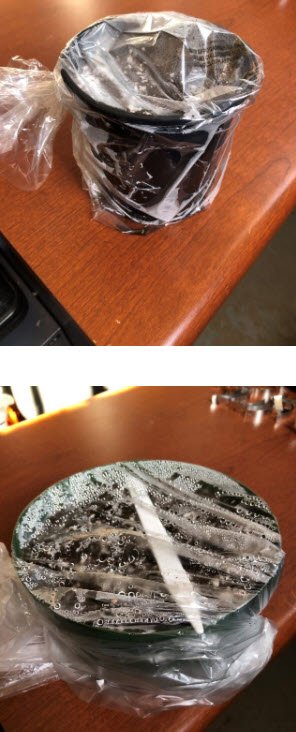Down to Earth: Stratification Opens Interesting Possibilities For New Garden Plants
*Down to Earth is a weekly garden column in The Sandwich Enterprise written by Heritage’s Director of Horticulture, Les Lutz. For the full article with images please visit The Sandwich Enterprise here.
Now is a great time of the year to begin planning for the spring. I’ve been out collecting seeds from plants that I’ve been watching this season that I need (want) to have in my own garden. Fall and early winter are the time to collect and begin the process of preparing the seeds for spring. Many of the plants that are hardy in this area have special treatments that have to be met in order for them to germinate.
 Stratification is one of the most common requirements. It’s easy to understand why plants that live in northern temperate climates have a stratification requirement. Once the seeds have matured, usually late summer through fall, the plants have methods of scattering the seeds. Often they fly away on the wind (think Maple), or they are eaten and then deposited somewhere else (think hollies & birds), or they simply fall (oaks) and are buried (squirrels).
Stratification is one of the most common requirements. It’s easy to understand why plants that live in northern temperate climates have a stratification requirement. Once the seeds have matured, usually late summer through fall, the plants have methods of scattering the seeds. Often they fly away on the wind (think Maple), or they are eaten and then deposited somewhere else (think hollies & birds), or they simply fall (oaks) and are buried (squirrels).
But, if these seeds germinate in the fall they would most likely not survive the cold of the winter. Hence, a chemical barrier togermination. Stratification is the process of placing the seeds in a moist medium (peat moss or compost) and placing the mixture in a refrigerator for the next three months. This cold treatment slowly breaks-down the chemical barrier and allows the seed to germinate after the cold winter months.
I’ve collected several interesting seed sets this fall including the native Paw-Paw, a small tree that produces a large (6-8” long) yellowish-green edible fruit. Surprisingly, I found the seeds on eBay and bought them from someone that has a native grove in Kentucky. I’ve also found other interesting plants (seeds) online including Mahonia, Syrax obassia and even the elusive Stewartia malacodendron. There are several other sources online that offer seeds of lesser-known plants that that can be ordered.
Once I received the seeds, I placed them in peat moss and put the mixture in a small pot. I then wrap them in a plastic bag to hold the moisture and place the entire thing in the back of the refrigerator. I put a reminder on my phone calendar and in the spring, I’ll take them out and sow the seeds. Hopefully, I’ll be able to add some interesting plants to my garden at a relatively small cost. Of course, it’s always a good idea to make sure you know the provenance of the seeds but this can be a fun way to search for new plants for your garden.
Of course, cold stratification isn’t the only way plants protect their seeds from premature germination. Many plants also require a warm stratification and some actually require more than one treatment, i.e. – three months warm followed by three months cold. And then there are those that need several cycles of warm, cold or maybe scarification; sanding a small hole in the seed coat to allow moisture in.
All of this is a long way of saying now is the time to be looking for new and interesting plants to add to your garden, and to possibly have some fun searching for, and then the challenge of actually germinating the seeds.








